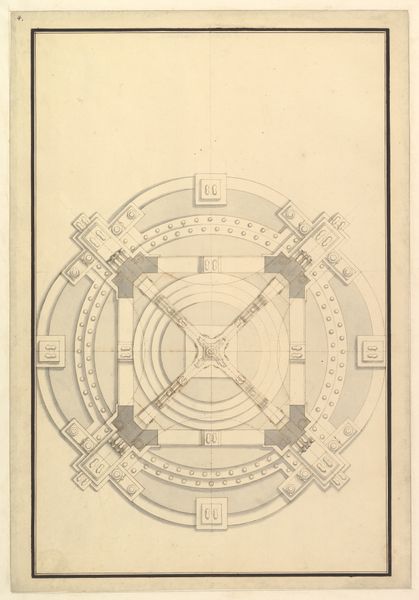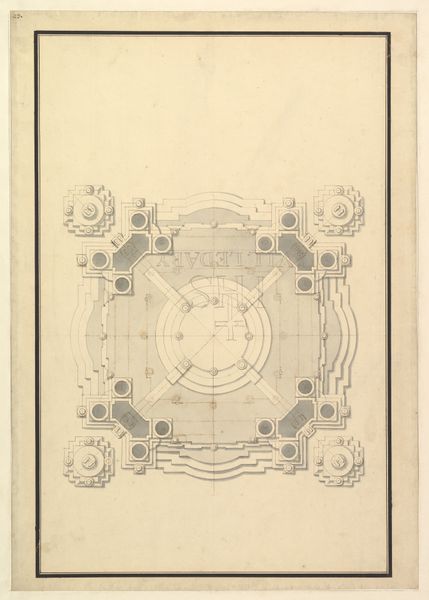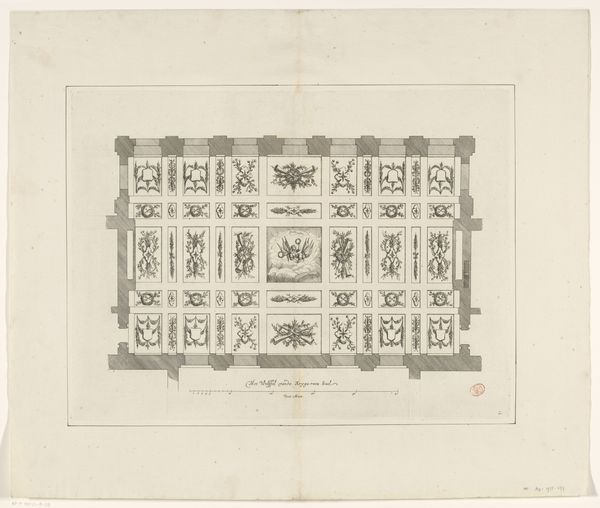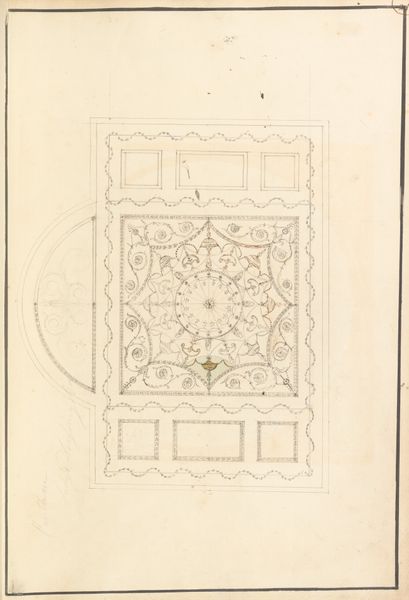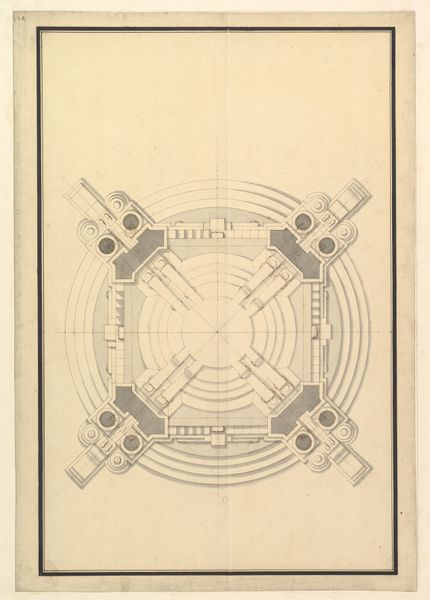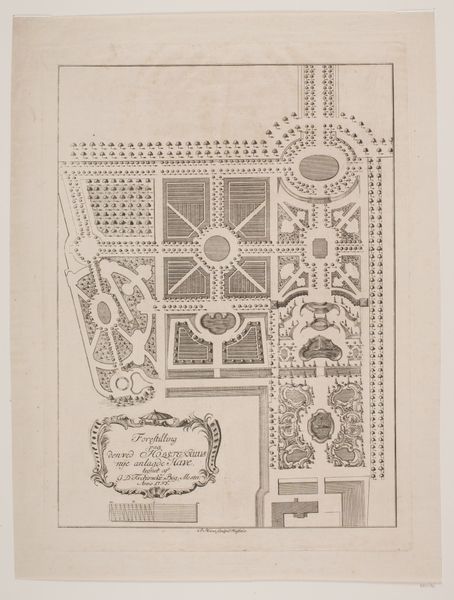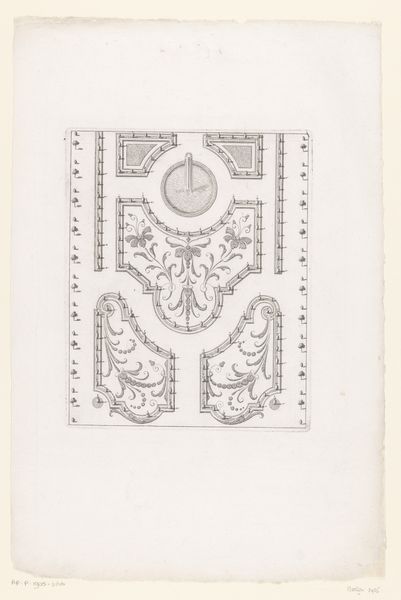
Ground Plan for a Catafalque for the regent of France Philip, Duke d'Orleans (1674-1723) 1718 - 1728
0:00
0:00
drawing, print, architecture
#
drawing
# print
#
perspective
#
11_renaissance
#
geometric
#
cityscape
#
architecture
Dimensions: 20-3/8 x 14-1/2 in. (51.8 x 36.8 cm)
Copyright: Public Domain
Giuseppe Galli Bibiena made this ground plan for a catafalque using pen, black ink, gray wash, and graphite. Catafalques were elaborate, temporary structures used during funeral rites for prominent individuals, and this design was intended for Philip, Duke of Orléans, Regent of France. Consider the social and political context of France during this time. The monarchy wielded immense power, and elaborate displays of mourning served to reinforce social hierarchies and legitimize royal authority. Catafalques, like this one, were temporary displays of architecture that reflected the cultural values of Baroque France. The Duke’s death was an opportunity for the monarchy to display its power and wealth through a grand spectacle. The design is geometric and symmetrical, reflecting the classical influences prevalent in Baroque architecture. The use of columns, arches, and other architectural elements suggests a desire to create a sense of grandeur and monumentality. By studying architectural drawings and related archival materials, we can gain insights into the cultural values and power structures of Baroque France. Art provides a window into the social world of its time.
Comments
No comments
Be the first to comment and join the conversation on the ultimate creative platform.



